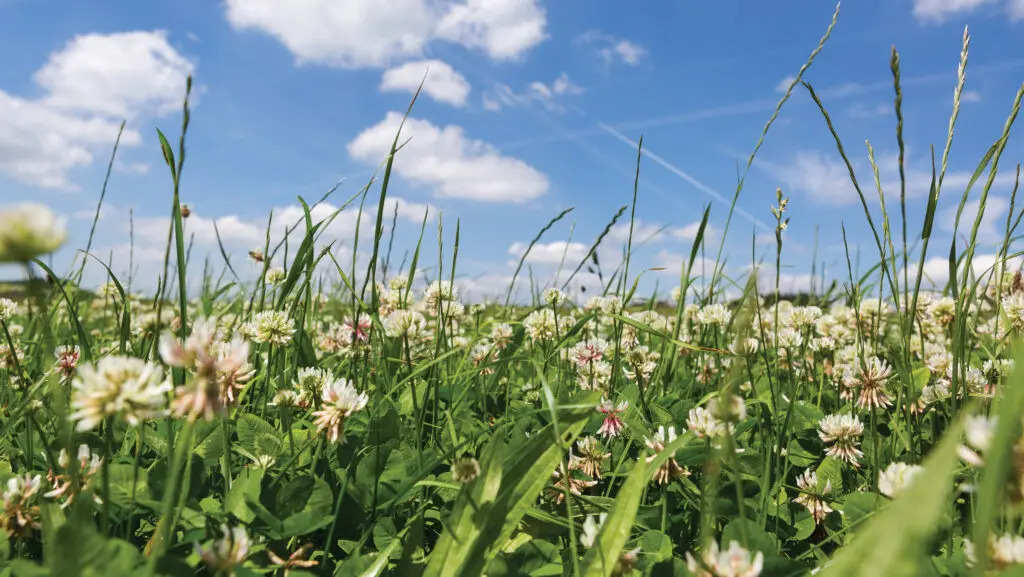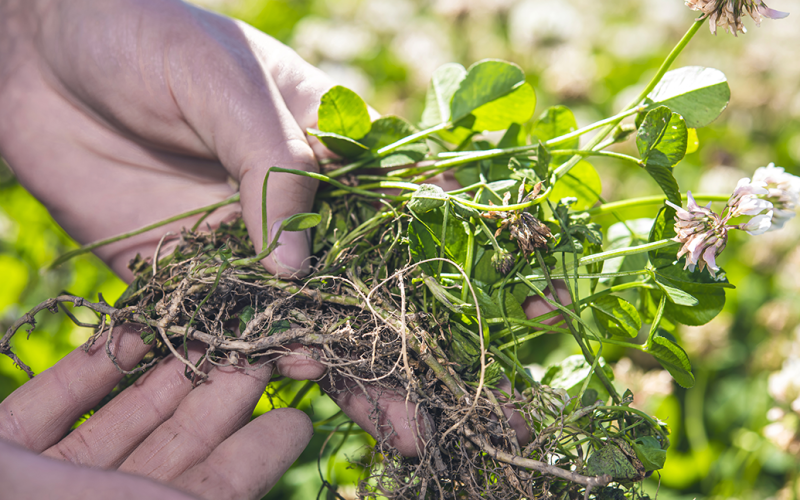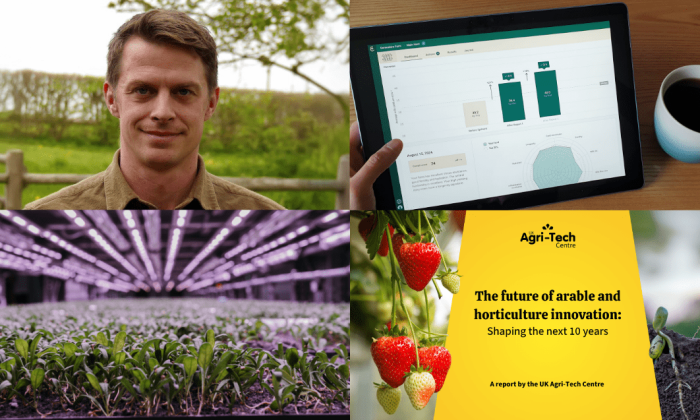Global human population forecasts of 10 billion by 2050 will raise food demand by 70% against a requirement for lower environmental impacts. England’s livestock agriculture is tasked with increasing the efficiency of production while reducing environmental impacts. Grasslands play a vital role in livestock farming, providing essential forage that supports the health and productivity of cattle, sheep and other grazing animals. They also provide stable carbon stores, with evidence showing permanent grasslands can store more than 2 billion tons of carbon to a depth of 100cm in the UK.
Despite their importance, it can be a significant challenge to manage grasslands effectively and efficiently utilising its nutrients. Understanding how grasslands are used, together with nutrient utilisation challenges and how these issues may be overcome is essential for reasons such as environmental sustainability, economic viability and enhancing livestock health and productivity.
The UK Agri-Tech Centre is collaborating with LEAF on the Nitrogen Utilisation Efficiency Legumes (NUE-Leg) project which is a DEFRA on-farm and research trial looking to eliminate the dependence of UK grassland farming on applied nitrogen fertilisers. It looks to do this by developing technological solutions to reduce environmental impacts while enhancing the economics and sustainability of grassland farming.
Challenges in grassland nutrient management
Grasslands are predominantly used for grazing livestock, providing a natural and cost-effective source of forage. Farmers rely on grasslands for feeding livestock, maintaining animal welfare and reducing feed costs.
Despite the clear benefits of grassland-based farming, nutrient management presents ongoing challenges. One of the most significant issues is the inefficient use of fertilisers, particularly nitrogen-based fertilisers, which are widely used in the UK to support perennial ryegrass pastures. Overuse of synthetic fertilisers leads to a range of environmental problems, including nutrient imbalances, nitrogen leaching into groundwater and runoff into rivers and lakes. This runoff contributes to water pollution and eutrophication, harming aquatic ecosystems. Moreover, grazing animals often distribute nutrients unevenly across fields, leading to areas of over-fertilisation in some spots and nutrient deficiencies in others, which further complicates nutrient management.
The quality of forage in grasslands is another challenge. Seasonal variations, coupled with poor soil health, can cause fluctuations in the nutritional value of the forage, which affects livestock health and productivity. Grasslands that rely on a monocrop like perennial ryegrass, while hardy, do not provide the diverse nutrients that a mixed-species pasture would. Livestock require a well-balanced diet, and grasslands alone may not always meet their nutritional needs, especially when forage quality declines. This forces farmers to supplement their feed, increasing costs and complicating the feeding process. Additionally, overgrazing is a common problem, where excessive grazing pressure can lead to soil erosion, reduced plant diversity and lower forage yields.

Integrating legumes for sustainable farming
In response to these challenges, many farmers are now exploring more sustainable farming practices. One promising approach is the integration of legumes, such as clover, into grassland systems. Legumes have the unique ability to naturally fix nitrogen from the atmosphere, reducing the need for synthetic nitrogen fertilisers. This process not only improves nutrient efficiency but also helps maintain soil health by enhancing its organic matter content. Legumes play a vital role in maintaining the balance of nutrients in the soil, supporting the growth of diverse plant species and improving the overall productivity of the pasture.
By reducing the reliance on synthetic nitrogen inputs, the risk of nitrogen leaching and runoff is minimised, which in turn helps protect water bodies from pollution and eutrophication. Legumes also contribute to carbon sequestration, as their deep root systems help capture and store carbon dioxide in the soil. This enhances the role of grasslands as carbon sinks, making them valuable tools in the fight against climate change.
The inclusion of legumes in pastures can also reduce input costs for farmers. Synthetic fertilisers are expensive, and by relying on the natural nitrogen-fixing abilities of legumes, farmers can significantly lower their spending on fertilisers. Additionally, legumes improve the yield and quality of forage, increasing its protein content and digestibility. This leads to better livestock performance, whether it is through improved growth rates or higher milk production, it can translate into greater financial returns for farmers.
The health and productivity of livestock are positively impacted by the inclusion of legumes in their diet, as they provide a rich source of protein and other essential nutrients that contribute to a more balanced and nutritious diet for grazing animals. This improved nutrition supports higher growth rates and better overall health, which in turn enhances the productivity of the livestock. Research has shown that livestock fed on high-quality forage, including legumes, also produce less methane per unit of output.
Embracing innovation
Farmers can benefit from adopting best practices in soil management, integrating diverse plant species and utilising precision agriculture techniques to monitor and optimise nutrient distribution. Collaboration with agricultural scientists and research projects can also provide the necessary support and information to implement these strategies effectively. The NUE-Leg project is a step in the right direction to eliminate the dependence of UK grassland farming on applied nitrogen fertilisers.
As agriculture shifts towards more sustainable systems, the role of innovative practices like legume integration will become increasingly important in maintaining the vitality of grasslands. By improving nutrient utilisation through these practices, farmers can reduce their environmental footprint, increase farm profitability and ensure the health and productivity of their livestock.



